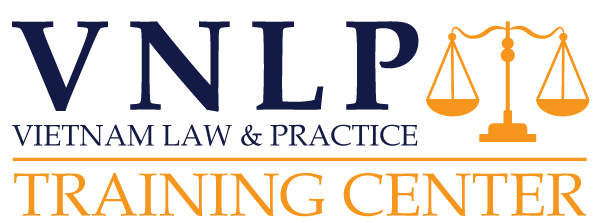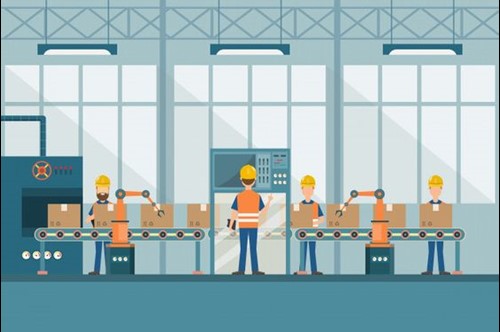In emerging markets, Vietnam has been ranked one of the most attractive destination for foreign investors to establish commercial presence, factories via foreign direct investment. In enabling this attraction, the government would pave the way for developing industrial and economics zones, together with maintaining political stability and cheap labour force.
I. Overview
Until June 2019, the country has 343 industrial zones (industrial zones are used to represent export processing zones, supporting industrial zones and ecological industrial zones) and economic zones (including border-gate economic zones and coastal economic zones) accounting for about 96,000 ha. In the first 6 months of 2019, the established industrial and export processing zones have drawn above 8,7 billion USD with 340 foreign invested projects.[1]
In Vietnam, the Ministry of Planning and Investment (MPI) is in the position of coordinating with relevant ministries, branches and People’s Committees of provinces and cities under central authority to formulate a master plan for development of industrial zones or economic zones and submit it to the Prime Minister for the approval.[2] The approved master plan for development of industrial zones or economic zones shall be used as the basis for consideration of the establishment of any industrial zone or economic zone; and for formulation of master planning or plans for investment in development of technical and social infrastructure systems servicing the development of an industrial zone or economic zone. On 21 August 2006, the Prime Minister promulgated Decision 1107/QD-TTg on approval of master plan for development of industrial zones or economic zones up to 2015 and orientated plan up to 2020. In addition, on 25 April 2008 and 23 September 2008, the Prime Minister also promulgated Decision 52/2008/QD-TTg and Decision 1353/QD-TTg on approval of master plans for development of border-gate economic zones and coastal economic zones respectively. Decree No.29/2008/ND-CP dated 14 March 2008 is a legal instrument to govern establishment, organization and operation and management of industrial, economic zone throughout the country, which was replaced by Decree No.82/2018/NĐ-CP dated 22 May 2018 (Decree 82).
II. Type of IZs
Industrial zones (IZs) means zones specializing in production of industrial goods and provision of services for industrial production, having fixed geographical boundaries, and being established pursuant to the conditions, order and procedures stipulated in these Regulations. IZs is classified into different types such as export processing zones, supporting industrial zones, ecological industrial zones.
a) Export processing zones (EPZ) mean IZs specializing in production of export goods and provision of services for production of export goods and export activities, having fixed geographical boundaries, and being established pursuant to the conditions, order and procedures applicable to IZ. EPZ may be separated from outside areas in accordance with regulations applicable to non-tariff areas;
b) Supporting IZs mean IZs specializing in manufacturing auxiliary industrial products and rendering services satisfying the needs of manufacture of these products. To be defined as supporting industrial zones, the minimum area of land leased or sub-leased to develop projects on investment in supporting industries must account for at least 60% of the area of rentable industrial land of such IZ;
c) Ecological industrial zone mean IZs in which enterprises get involved in cleaner production, make effective use of natural resources and enter into manufacturing cooperation and affiliation in order to tighten industrial symbiosis to promote economic, environmental and social efficiency in these enterprises.
Economic zone (the “EZ”) means zones having a fixed geographical boundaries including functional zones and being established to serve the purpose of calling for investments, promoting socio-economic development and maintaining national defense and security pursuant to the conditions, order and procedures stipulated in these Regulations. EZs are classified into coastal EZs and border-gate EZs:
a) Coastal EZs are formed in the coastal area and adjacent areas of the coastal area; and
b) Border-gate EZs are formed in onshore border-gate areas and adjacent areas having international border gates or main border gates, and established according.
Is there a special economic zone in Vietnam?
During more than 20 years of developing industrial and economic zone in Vietnam, there has been in fact no special economic zones with international standard, and that all the existing economic zones established up to now are merely IZs in association with many limitations.[3] In 2013, during the official visit to Phu Quoc Island, Deputy Prime Minister Vu Van Ninh called for in-depth study by scientist with a view to turning Phu Quoc into a special economic zone. [4] Following that, in 2016, the Government agreed in principle to establish three special administrative economic zones in Van Don (Quang Ninh), Phu Quoc (Kien Giang), and north of Van Phong Bay (Khanh Hoa). This approval was stated in the Resolution 103/NQ-CP dated 05 December 2016 regarding the Government’s regular meeting of November 2016. To have the legal instrument for developing such special economic zones, the Government have been working on the draft of the Law on Special Administrative and Economic Zones. Despite of such effort from the Government to create a new model of EZ with breakthrough policies and mechanisms, this draft law has not been passed by the National Assembly.
III. Investment incentives for industrial zones and economic zones
In principle, IZs are preferential investment areas and entitled to the incentive policies as applied to the areas included in the list of areas with difficult socio-economic conditions. [6] The incentives include the preferential corporate income tax rate (CIT) of 17% applied to a period of 10 years, a CIT exemption for a 2-year period and a 50% reduction of tax payable for a period of 04 years.
The best incentives are for IZs established in the areas with difficult socio-economic conditions and EZs. Such areas shall enjoy the incentive policies as applied to the areas in the list of areas with extremely difficult socio-economic conditions. [7] The incentives include the preferential corporate income tax rate (CIT) of 10% applied to a period of 15 years, a CIT exemption for a 4-year period and a 50% reduction of tax payable for a period of 09 years.
The expenses for investment in construction, operation or renting of condominium apartments and social infrastructure for workers in IZs or EZs shall be deductible expenses for calculation of the taxable CIT for the companies having investment projects implemented within these IZs or EZs.
Special treatment for EPZs and EPZ enterprises
Special provisions applicable to export processing zones and export processing enterprises shall comprise:
a) Export processing zones and export processing enterprises may apply the regulations on separate customs areas and non-tariff areas in accordance with law. The status of being an export processing enterprise shall be stipulated in the investment registration certificate.
b) Export processing zones and export processing enterprises may be separated from the outside territory by a fence, and have entry and exit gates and doors, and they must enable inspection by customs and relevant agencies.
c) Export processing enterprises may purchase stationery, food, foodstuffs and consumer goods from the domestic Vietnamese territory to serve the operations of the office apparatus and consumption by officials and employees working in the enterprise. Export processing enterprises may elect to carry out or not to carry out export, import and custom procedures for such goods.
d) Customs procedures, customs inspection and supervision for imported and exported goods of export processing zones and export processing enterprises shall be implemented in accordance with the law on customs.
e) Exchanges of goods between export processing zones, export processing enterprises and other areas in the Vietnamese territory, except for non-tariff areas, shall constitute import, export transactions.
f) Officials and employees working in export processing zones and export processing enterprises shall not have to declare with customs when they bring foreign exchange from Vietnamese domestic territory into the export processing zone and export processing enterprise, and vice versa.
IV. Conditions for establishment of IZs and EZs
Investment procedures for setting up industrial zones will follow the Law on Investment and its implementing regulations.
1. Industrial zones
Conditions for establishment of an industrial zone:
a) Being consistent with the approved master plan for development of industrial zones and the approved land use plan by the competent authority; and
b) At least 60% of the total aggregate area of industrial land of industrial zones which have been established in the locality of a province or city under central authority has been leased or sub-leased to projects for which investment registration has been made or which have been issued with an investment registration certificate.
A master plan must be formulated in accordance with guidelines provided by the Ministry of Construction before formulation of a detailed master plan with respect to industrial zones:
(i) which have an area of five hundred (500) hectares or more; or
(ii) in which numerous investors participate in investment in construction and commercial operation of infrastructure in separate areas or industrial zones attached to another urban area or concentrated business area in an overall plan.
The opinions in writing of the Ministry of Construction; the Ministry of Planning and Investment, sectoral administrations and the Ministry of National Defense (for the case of IZs is near areas for national defence) about a detailed master plan for construction of an industrial zone shall be required before the provincial People’s Committee approves such plan in the following cases: Industrial zones which have an area of five hundred (500) hectares or more or are situated in a position next to a national highway or near areas for national defence or preservation of historical relics, famous landscapes or national or regional ecological preservation areas; national tourist sites and attractions or which are located in Category I, II or special urban areas.
2. Economic zones
The conditions for establishment of an economic zone are as follows:
a) Being consistent with the approved master plan for development of economic zones;
b) Having favourable conditions and resources for investment and development of technical infrastructure;
c) Not causing any negative impact on natural preservation zones; or any adverse effect on or damage to tangible cultural relics, famous landscapes, or groups of buildings with a historical, aesthetic or scientific value; being consistent with arrangements for national defence and ensuring national defence and security; and facilitating satisfaction of requirements relating to the environment, ecology and sustainable development.
Particularly for coastal economic zones:
a) Being situated in a geographical position favourable for regional economic development (having a deep water seaport or being near an airport), easy for connection with a national or international important traffic route; being easy to control and convenient for domestic or overseas exchange;
b) Having an area of ten thousand (10,000) hectares or more and satisfying requirements for general development of the economic zone;
c) Having the ability to attract large-scale or important investment projects and project works and affecting the socio-economic development of the whole region; and
d) Having the ability to mobilize local potentiality and affecting development of surrounding areas.
Particularly for border-gate economic zones:
a) Having international border gates or main border gates, encompass adjacent administrative units without separation in terms of space;
b) Connecting favourably with national important traffic routes; exchanging favourably with neighbouring countries through an onshore border-gate of a foreign country;
c) Satisfying requirements for general development of the border-gate economic zone including commercial activities, import and export, temporary import for re-export, transportation of goods in transit, industrial production, tourism and services; having conditions for mobilizing potentiality in the locality and surrounding areas; and having the ability to develop trade and to attract investment; and
d) Attaching economic development to maintenance of security, politics, social order and safety, and protection of national sovereignty in border areas.
[1] http://www.mpi.gov.vn/Pages/tinbai.aspx?idTin=43533&idcm=207
[2] Article 3 and 14 of Decree 82
[3] http://english.vietnamnet.vn/fms/business/26165/building-special-economic-zone—the-inconclusive-itinerary.html
[4] http://english.vov.vn/Economy/Phu-Quoc-urged-to-become-a-special-economic-zone/264947.vov
[5] http://www.ccsezr.org/enews/news_detail.php?newsid=3019
[6] Article 24.1 of Decree 82
[7] Article 24.2 of Decree 82
- Legal Internship - 8 October, 2024
- Skills vs. Knowledge – Which one is more important for lawyers - 5 October, 2024
- Lawyers’ Mentoring - 1 October, 2024

